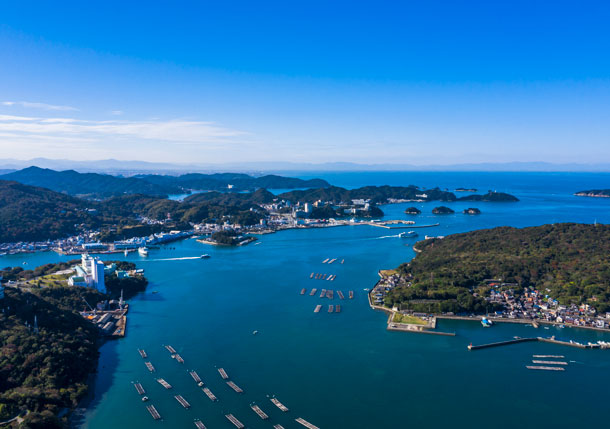- HOME
- Harmony
Living in Harmony with the Divine
信仰や神様との共存

Ise-Shima National Park is a national park located on the Shima Peninsula in Mie Prefecture. It was officially designated shortly after the end of World War II, and it includes sacred areas such as the forested grounds of Ise Grand Shrine—as well as Shirataki-san.
(Quoted from the Ministry of the Environment website):
Ise-Shima National Park was designated in 1946 as Japan’s first national park after the war.
The park covers the entire Shima Peninsula in central Mie Prefecture, spanning approximately 50 kilometers east to west and 40 kilometers north to south.
Its coastal areas are characterized by classic ria coastlines, including the deeply indented Ago Bay and Gokasho Bay, with countless islands forming a delicate and elegant landscape.
In addition to its natural scenery, the park features aquaculture rafts for pearl farming, traditional female divers (ama) harvesting abalone and turban shells, and cultural heritage sites like Ise Grand Shrine—creating a unique fusion of natural beauty and human history and tradition.
This blend of nature and culture is what defines the park.
A Park Shaped by Faith and Preservation
One particularly unique feature of Ise-Shima National Park is that 96.1% of its land is privately owned—a rarity among Japan’s national parks.
The reason for this lies in the postwar period, when there were serious concerns about the dismantling of temples and shrines, large-scale logging for resources, and the threat of unregulated development. In response, local people—long steeped in a tradition of spiritual reverence—stepped forward to protect the lands where the gods were believed to dwell.
Among these supporters was Kokichi Mikimoto, the famous “Pearl King.” Much of the wealth he gained from pearl cultivation was devoted to protecting the forests and natural environment of this region.
Similarly, Shirataki-san has also been preserved thanks to the ongoing efforts of volunteers from Funatsu Town, who have worked to maintain its natural and spiritual integrity.
The coexistence of faith and nature—so deeply rooted in local life—continues to shape the foundation of Ise-Shima National Park today.
